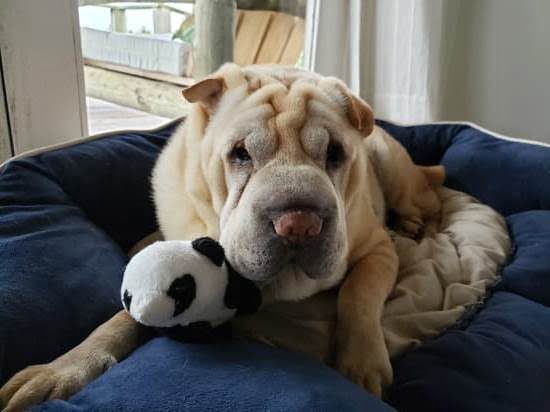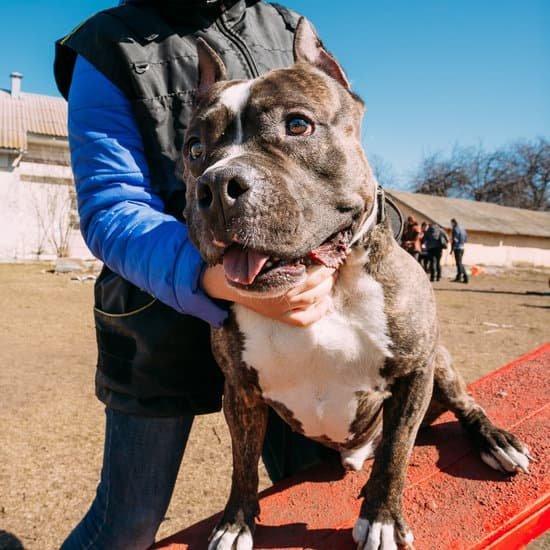Introduction
Belgian Shepherd Dogs (or Belgian Shepherds) are recognized as a noble and hardworking breed, with a reputation for being intelligent and loyal companions. Training a Belgian Shepherd Dog can be very rewarding, as it is smart and has an eagerness to please that makes it easy to train. With consistent training, you can easily have your Belgian Shepherd Dog obeying commands in no time!
Benefits of owning and training a Belgian Shepherd Dog can include: increased obedience skills, enhanced security, better behavior around people and other animals, improved self-control, and additional exercise opportunities. Additionally, regular training helps to build the bond between you and your dog even further. Patience, consistency, love and positive reinforcement are key components when it comes to training a Belgian Shepherd Dog. Teaching them how to properly respond to commands will also soon become second nature; providing that the right steps are taken during their learning process. When provided with proper guidance, your Belgian Shepherd will soon become well behaved around others – both humans and animals alike! Furthermore, teaching them basic obedience commands such as ‘sit’, ‘stay’ and ‘come’ can prove invaluable if your furry companion ever gets lost or needs recalling quickly upon request. Ultimately by investing the time into correctly training your Belgain Shepherd Dog you’ll have an obedient four-legged family member who loves being able to show off their well behaved mannerisms!
Breed Characteristics & Temperament
The Belgian Shepherd Dog is an active, intelligent and loyal breed. They are highly trainable and respond well to consistency and positive reinforcement techniques. They are generally good with children, however they do require socialization from an early age and need firm leadership from their owners. Belgian Shepherds can become possessive of their family and territory without proper training, but with consistent obedience training, this should not be a problem.
Belgian Shepherds make wonderful watchdogs due to their protective nature. They have been bred to guard herds of sheep and may even try to herd other family pets such as cats or smaller dogs if not properly trained. While they do need regular exercise, too much stimulation may make them anxious and difficult to manage so exercise should be moderated in order to keep them relaxed yet alert.
Overall, the Belgian Shepherd Dog is a loving companion that cares deeply for its people as long as it is respected and provided with strong guidance and leadership. Training will ensure that your beloved pet has the necessary skillset needed to be a well-rounded companion both inside the home, whilst out on walks or trips away from home. With consistency, patience and positive reinforcement training you can ensure that your dog gets the education he needs to thrive in different environments while also under your control.
Choosing the Right Training Course
The Belgian Shepherd is one of the most intelligent and versatile breeds in the world, making them an ideal choice for service or working roles. Training this breed is vital to ensure that they can be well-suited to their job. Training your Belgian Shepherd not only contributes to an improved bond between you and your dog but also helps develop their obedience, socialization and enriching activities.
There are various options available when it comes to training a Belgian Shepherd Dog (BSD). It is important to consider which type of training course best suits the individual needs of your BSD before signing up; whether that be private lessons with a professional trainer, attending a group class or exploring self-training techniques using books, videos and other resources.
Private lessons offer many benefits including that all sessions are tailored specifically for your pup. A professional can assess the capabilities of your dog then give guidance on how to effectively communicate expectations whilst eliminating any potential behavior issues from bad habits. Working with a certified instructor in an obedience class can provide opportunities for structured interaction, teaching commands and practicing field work with other puppies as part of a team environment.
Self-training techniques may be more suitable for those wanting to take matters into their own hands, or believe they may have enough knowledge already in order to train their pet effectively. Books such as ‘How To Train Your Beligian Breeder’ by Jaxon Harrison offers useful tips on establishing boundaries and good manners in addition to positive reinforcement methods. There is also plenty of free online video tutorials available on Youtube or specific courses purchasable from organizations like Doggy Dan The Online Dog Trainer. Ultimately, selecting the right course or resource depends entirely on you and your pup’s preference/needs but whatever you choose make sure it is focused towards achieving clear objectives that benefit both of you!
Establishing a Clear Set of Rules & Expectations
When it comes to training a Belgian Shepherd Dog, it is important to establish a clear set of rules and expectations. It is essential to establish boundaries for the dog in order to maintain the desired behavior. When setting boundaries, you should consider why these are being implemented as well as how often they will be enforced. The process must be repeated consistently so that your pup learns the boundaries that they should adhere to.
Another important aspect is consistency, not only in terms of discipline but also rewarding. It is important that the same rewards or punishments are given when appropriate throughout the training period. This will allow your pup to truly understand what behaviors are expected and make sure that they become accustomed to their new routine more quickly and effectively. Alongside enforcing the rules, positive reinforcement will also help reinforce good behaviors and make it even easier for them to learn and respond properly during everyday activities. Finally, its important not to forget about teaching manners; from sitting at meal times, refraining from jumping on people or being calm when being petted by strangers – these basics can be learned with practice!
Consistency & Neutrality
Training a Belgian Shepherd Dog takes consistency and neutrality. With any training, success or failure is dependent on how consistent you are with the program. Consistency builds trust and creates a reliable routine for your dog. The same expectations should be held to them each day and treat criteria should remain constant. Not only will this benefit your pup in developing better behaviors but also ensure they can regularly predict what rewards they will receive. Neutrality when implementing the training is also important. As owners, we may naturally display preferences in behavior or previous teaching methods; nevertheless, it’s essential to stay impartial as much as possible and let your pup discover their own style of learning as you go along rather than imposing preconceived ideas of learning on them. Keeping things relaxed yet focused, aiming to capture natural responses instead of forcing it upon them and providing plenty reward – preferably non-food based rewards such as verbal affirmations or toys – will help keep your pup engaged more easily while remaining an effective teacher.
Socialization & Mental Stimulation
Belgian Shepherd Dog training should focus on socialization and mental stimulation to promote positive behaviors. Socialization is an important part of Belgian Shepherd Dog training – it allows them to learn healthy habits and become comfortable around other people, animals, and environments. With proper socialization and puppy classes, a Belgian Shepherd can grow up to be calm, friendly and responsive in new situations. It is also essential to provide adequate mental stimulation to keep them well-rounded, confident, and in tune with their environment while maintaining their characteristic high energy. To encourage these behaviours, engage in playtime with interactive toys or make a game out of common commands like “sit” or “stay”. Regular walks with new scents on different terrain will also help provide the opportunity for mental stimulation that challenge your dog’s thoughts as they interact with their surroundings. Lastly, always aim to keep your training sessions short but sweet – productive yet stress-free for both you and your pup!
Positive Reinforcement & Rewards
When training a Belgian Shepherd Dog, it is important to use positive reinforcement techniques to encourage desired behaviors and discourage unwanted behaviors. Positive reinforcement will motivate your Belgian Shephard Dog to perform the desired behavior again and will also increase his trust in you as his owner. Rewarding desirable behaviors with verbal praise, treats, or even playtime can be an effective way of motivating your dog.
It is important that rewards are immediate and consistent after the desired behavior has been shown – this will help your dog understand exactly what behavior it is you want him to repeat in the future. When giving rewards and incentives, consistency is key: each time your dog performs the desired behavior, he should receive the same reward. This will ensure that your pet associates good behavior with receiving positive reinforcement.
In addition to positive reinforcement, providing clear structure and rules for your dog is an important part of Belgian Shepherd Dog training. Set expectations for him early on and strictly enforce these expectations without fail. If expectations are not enforced, your pet may become confused or stressed-out as he won’t have guidance from you regarding his actions or boundaries. With consistent structure, patience and understanding, however, successful housebreaking can be achieved with a Belgian Shepherd Dog’s willing participation.
Teaching Commands & Tricks
Belgian Shepherd training involves teaching your pup basic commands and a few tricks for extra & interactive engagement. To ensure that the dog is attentive, it’s best to keep sessions short and interesting. Use positive reinforcement such as treats, verbal praise and petting to reward behavior you would like the pup to repeat. If negative reinforcement is needed only use verbal corrections such as “no”, and never hit or punish the dog in any way.
Begin by teaching your pup simple commands such as sit, stay, come and lie down. Luring him with a treat can also be effective in teaching him what he must do when given a command or hand signal. Practice these techniques with consistency to improve accuracy. You can also establish hand signals for each command like pointing or raising your hand if telling the pup to stay.
Once the basic commands have been learned, you can move on to some fun tricks such as rolling over, playing dead or jumping through hoops. These exercises make training more enjoyable; they require creativity so that each training session stays interesting. With practice and patience both you and your Belgian Shepherd will soon look forward to every training session!
Working With Difficult Situations
Belgian Shepherd Dogs are highly intelligent, loyal, and active breeds. With so much energy and intelligence, they have a tendency to develop stubborn behaviors due to boredom or lack of discipline. It is important to know how to address any unwanted or difficult behaviors.
One of the most common issues with Belgian Shepherds is that they can easily become destructive when not adequately exercised or stimulated mentally. To prevent destructive behavior, it is essential to provide your Belgian Shepherd Dog with regular physical exercise as well as activities that challenge their minds such as agility or tracking courses, puzzle toys and fetch games. Training must be consistent and firm but still gentle. Do not use any punishment-based methods as this may damage the relationship between you and your dog. Positive reinforcement works best for these dogs; use treats and verbal praise for good behavior during training sessions as well as plenty of playtime for bonding purposes.
Another common issue experienced by owners of Belgian Shepherd Dogs is barking or whimpering excessively when left alone. This can be due to separation anxiety, which can prove almost impossible to break once it has been established in a dog’s mind. The best solution for preventing separation anxiety is prevention: try leaving your dog alone for short periods at first before gradually increasing the amount of time each day over several weeks. During this period keep up with mentally stimulating activities such as hide-and-seek games or scent work exercises as well as regular exercise sessions every day so that they have no time to feel bored while you are away.
Finally, Belgian Shepherds have a notorious reputation for pulling on their leash hard during walks; this is often caused by wanting to go faster than usual or if they easily get distracted by smells or other people/dogs passing by on the street. Instilling basic commands such “heel” will help curb this habit but consistency and patience are key here too – try using slower paces during walks instead of only giving them full liberty; rewarding with treats every single time they obey commands also helps build up positive habits more quickly. Implement practice routes at home without distractions prior walking on public spaces if possible; putting harnesses specially designed for large dogs in order to reduce the pressure from their neck helps them gain better control during leisure walks too!
Taking Breaks & Re-Assessment
Taking a break from Belgian Shepherd Dog training is important for both you and your pet. During the process, progress might not always be linear and it’s important to re-assess the situation on a consistent basis. If there appears to be a decrease in motivation or an increase in frustration, then it’s best to take a step back and pause for some time. This can give you and your dog time to cool off and come back with fresh energy and a new perspective.
It’s essential to have an understanding of when breaks should happen as well as how long they should last. A simple way of gauging this is if either party is becoming frustrated, overwhelmed, confused or getting too excited then it’s probably time for a break. Your pet will require more breaks than you as spirits may wane quickly and patience wears thin in animals more so than humans – try not to push them too hard with long periods of focus or intensive methods. Breaks don’t need to be overly long – they can vary anywhere from five minutes up to half an hour depending on the situation, with shorter gaps recommended initially while training gets underway. During these times of rest, provide treats or playtime with toys before heading into another training session afterwards – this offers the rewards aspect even during respite times and helps convince your pup that being obedient is fun!
Conclusion
Training your Belgian Shepherd Dog can be extremely rewarding and comes with great responsibility. Therefore, it is of the utmost importance that you take the time to make sure every aspect of their training is addressed. From basic obedience commands like sit, lay down, come, stay, and leave it to more advanced behavior modification techniques like socialization and impulse-control exercises, everything will help you and your dog achieve success both in the home and out in public. In addition to these skillset building exercises, it’s beneficial to provide intellectual stimulation for your pup with interactive puzzle toys so that they continue to learn through playtime activities. Finally, keep rewarding good behavior with treats or affection – be consistent with this practice so that your pup associates their desirable behaviors as positive experiences. By doing this and continuing the process of understanding more about how your pup learns best as well as setting realistic expectations you’ll ensure a happy relationship between you and your four-legged companion for years to come!

Welcome to the blog! I am a professional dog trainer and have been working with dogs for many years. In this blog, I will be discussing various topics related to dog training, including tips, tricks, and advice. I hope you find this information helpful and informative. Thanks for reading!





